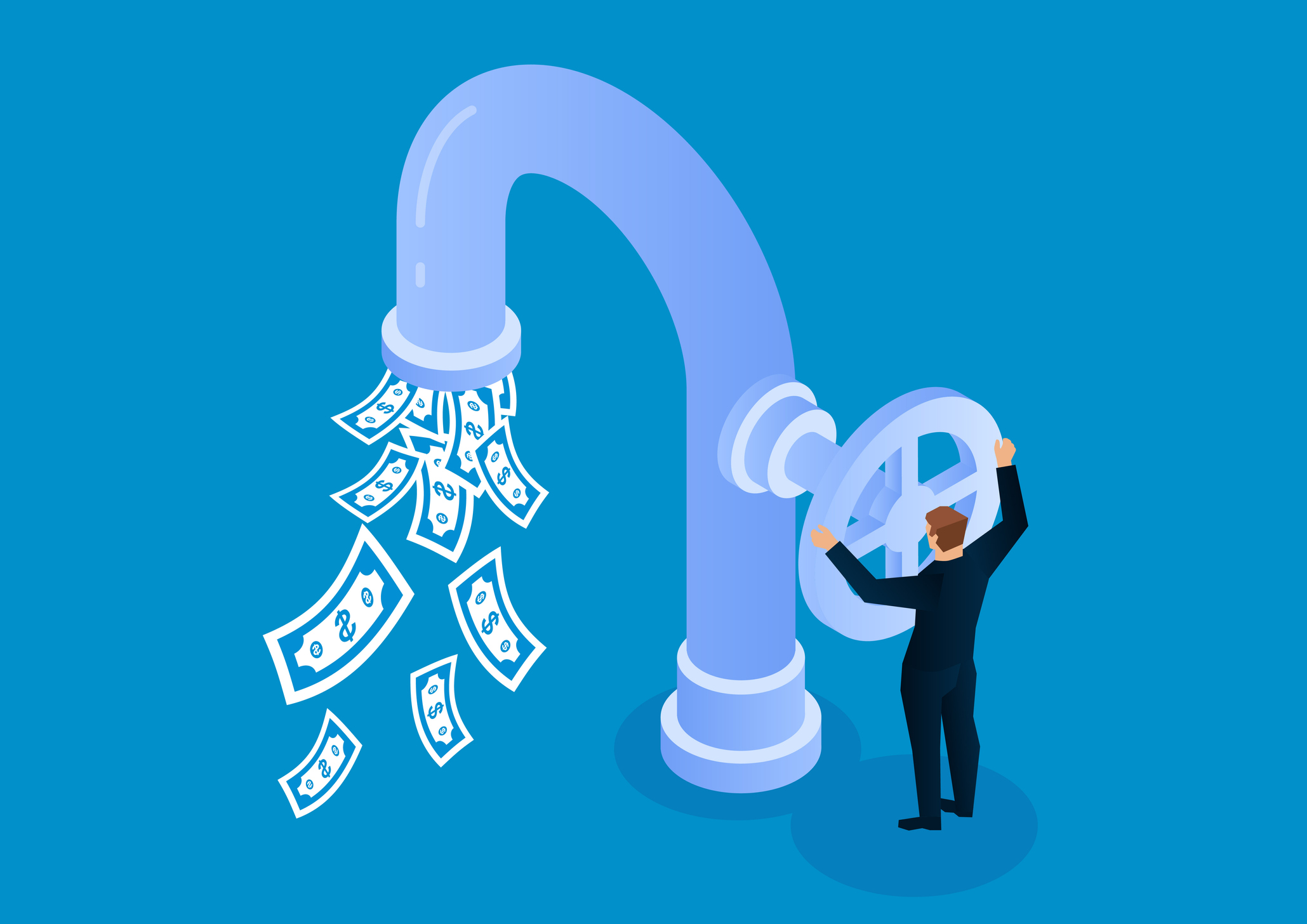4 Ways the Strong U.S. Dollar Helps Investors
It's crazy to buy European bonds when the euro is losing value and you can get at least a percentage point more yield from Uncle Sam.

The news about the dollar’s brute strength is giving the Federal Reserve a run for the money for the attention of Wall Street commentators and yield-seeking investors. But unlike 99% of the palaver about the Fed, the dollar’s heft is cause for celebration. Compared with its rivals, our Herculean currency is stronger today than at any time since 2010. To paraphrase the classic ’70s tune by Chicago, your Lincolns and Hamiltons are feeling stronger every day.
The buck’s ascent is perfectly rational in view of the improving U.S. economy, which looks like a juggernaut compared with the rest of the world. But the dollar’s strength is something of a mixed blessing. If a U.S. company exports to a land like Brazil, where the real has lost 35% of its exchange value since 2012, customers will have to pay more for its products and the company will likely sell fewer of them. And any U.S. firm that does a lot of business in countries with weakening local currencies will find that its sales translate into fewer dollars. Losses from currency translations aren’t ruinous to an established concern such as a John Deere or a McDonald’s, but they are a headwind for the share prices of those and many other multinational companies.
A strong dollar can also harm holders of foreign bonds. Any entity that owes big bucks to U.S. banks and bondholders (and foreign dollar debt owed to America tops $3 trillion) had best produce oil or gold or something else that trades globally in greenbacks. If not, the borrower may struggle to service the debt, and suffer a credit-rating downgrade and a brush with default.

Sign up for Kiplinger’s Free E-Newsletters
Profit and prosper with the best of expert advice on investing, taxes, retirement, personal finance and more - straight to your e-mail.
Profit and prosper with the best of expert advice - straight to your e-mail.
But for the rest of your investments, especially made-in-America debt, the Dollar of Steel is on your side. It swats aside a bunch of bond bugaboos and provides an indirect boost for banks, insurers, utilities and real estate investment trusts. Here are four ways the ascending dollar helps the U.S. and U.S. investors.
1. Low inflation. A surging dollar means American consumers and manufacturers pay less for many commodities and other imports. Consider the price of crude oil, which has dropped 15% over the past three months. Tame inflation also enhances the purchasing power of future interest and dividend payments. That protects the value of bonds and other high-income securities.
2. Less pressure on the Fed. A central bank often raises interest rates to defend its nation’s currency and discourage money from leaving the country. With inflation low and the U.S. the safest haven for loose money in a dangerous world, the Fed can postpone the day when it bumps up short-term rates.
3. Less competition from commodities. Oil, copper and gold generally attract investors who mistrust cash, currencies and bonds as a store of value. So the lower the impetus to flee the dollar, the less likely a disruptive speculation in “stuff.” That’s one reason bonds and other income-oriented investments, such as master limited partnerships, have clocked commodities.
4. More money flowing into U.S. bonds. You can get 0.9% from Germany on its 10-year government bond, 1.3% from France or 2.5% from the U.S. Treasury. But the dollars you get from U.S. bonds buy 10% more euros than they did six months ago, not to mention a pile more pesos and rubles. It’s crazy to buy European bonds when the euro is losing value and you can get at least a percentage point more yield from Uncle Sam. So the Dollar of Steel is an ally in my sometimes lonely campaign to persuade Kiplinger readers that interest rates, even at today’s low levels, are reasonable. And it’s yet another reason to tune out the clamor to dump your bonds and raise cash.
Get Kiplinger Today newsletter — free
Profit and prosper with the best of Kiplinger's advice on investing, taxes, retirement, personal finance and much more. Delivered daily. Enter your email in the box and click Sign Me Up.

-
 Sam's Club Plans Aggressive Expansion: Discover Its New Locations
Sam's Club Plans Aggressive Expansion: Discover Its New LocationsSam's Club expansion plans will open up to 15 new stores each year. Learn where they plan to open in 2025.
By Sean Jackson Published
-
 What Is the Buffett Indicator?
What Is the Buffett Indicator?"It is better to be roughly right than precisely wrong," writes Carveth Read in "Logic: Deductive and Inductive." That's the premise of the Buffett Indicator.
By Charles Lewis Sizemore, CFA Published
-
 How Inflation, Deflation and Other 'Flations' Impact Your Stock Portfolio
How Inflation, Deflation and Other 'Flations' Impact Your Stock PortfolioThere are five different types of "flations" that not only impact the economy, but also your investment returns. Here's how to adjust your portfolio for each one.
By Kim Clark Published
-
 Kiplinger's Economic Calendar for This Week (April 14-April 18)
Kiplinger's Economic Calendar for This Week (April 14-April 18)This week's economic calendar features Fed Chair Jerome Powell as well as retail sales data and an unusually interesting weekly jobless claims update.
By Karee Venema Last updated
-
 Why I Still Won't Buy Gold: Glassman
Why I Still Won't Buy Gold: GlassmanOne reason I won't buy gold is because while stocks rise briskly over time – not every month or year, but certainly every decade – gold does not.
By James K. Glassman Published
-
 Should You Use a 25x4 Portfolio Allocation?
Should You Use a 25x4 Portfolio Allocation?The 25x4 portfolio is supposed to be the new 60/40. Should you bite?
By Nellie S. Huang Published
-
 Retirement Income Funds to Keep Cash Flowing In Your Golden Years
Retirement Income Funds to Keep Cash Flowing In Your Golden YearsRetirement income funds are aimed to engineer a steady payout of cash for retirees. Here are a few we like.
By Nellie S. Huang Last updated
-
 10 2024 Stock Picks From An Investing Expert
10 2024 Stock Picks From An Investing ExpertThese 2024 stock picks have the potential to beat the market over the next 12 months.
By James K. Glassman Published
-
 Why Investors Needn't Worry About U.S. Credit Downgrade
Why Investors Needn't Worry About U.S. Credit DowngradeFitch Ratings The United States saw its credit rating downgraded for just the second time in history, but experts aren't worried about the long-term damage to stocks.
By Dan Burrows Published
-
 Special Dividends Are On The Rise — Here's What to Know About Them
Special Dividends Are On The Rise — Here's What to Know About ThemMore companies are paying out special dividends this year. Here's what that means.
By Kim Clark Published